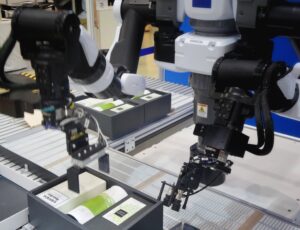Industrial automation has undergone remarkable transformations over the years, with advancements in technology playing a pivotal role. One such breakthrough is the integration of video analytics into the industrial landscape. Video analytics, a subset of artificial intelligence, employs computer vision to process and analyze visual data from cameras, enabling machines to make informed decisions based on visual information. In this article, we will delve into the significant impact video analytics has had on industrial automation, exploring its applications, benefits, and potential future developments.
Tech@Levintutu is the technical team at @Levintutu who writes on the latest technology and its applications in industrial automation. To read more about us, visit our case studies at https://levintutu.com/case-study/.
I. The Evolution of Industrial Automation
A. Traditional Automation Techniques
Traditionally, industrial automation relied on programmable logic controllers (PLCs) and human-machine interfaces (HMIs) to control and monitor machinery. While effective, these systems had limitations in terms of adaptability and decision-making capabilities.
B. Introduction of AI and Machine Learning
The integration of artificial intelligence (AI) and machine learning (ML) brought about a paradigm shift. These technologies empowered machines to learn and adapt, enabling them to perform tasks that were previously reserved for humans.
II. Video Analytics: A Game-Changing Technology
A. Understanding Video Analytics
It leverage computer vision algorithms to interpret visual data from cameras. This technology enables machines to recognize objects, track movements, and make decisions based on visual information.
B. Key Components of Video Analytics
- Object Detection and Recognition: Allows machines to identify specific objects or entities within a frame.
- Motion Detection and Tracking: Tracks movements within the video feed, providing valuable insights into the dynamics of a given environment.
- Anomaly Detection: Identifies irregularities or deviations from predefined patterns, alerting operators to potential issues.
III. Applications of Video Analytics in Industrial Automation
A. Quality Control and Inspection
It has revolutionized quality control by providing precise and consistent assessments of product quality. It can identify defects, measure dimensions, and ensure adherence to specifications.
B. Safety and Security
Enhanced surveillance through video analytics ensures a safe working environment. It can detect unauthorized personnel, monitor hazardous areas, and respond to emergencies in real time.
C. Predictive Maintenance
By analyzing equipment behavior over time, video analytics can predict when machinery is likely to fail. This enables proactive maintenance, reducing downtime and minimizing operational costs.
D. Process Optimization
It can analyze production processes, identify inefficiencies, and suggest improvements. This leads to enhanced productivity and resource utilization.
IV. Benefits of Video Analytics in Industrial Automation
A. Enhanced Accuracy and Reliability
Video analytics significantly reduces human error in tasks such as quality control and inspection, leading to more accurate and reliable results.
B. Real-time Decision Making
The ability to process visual data in real time allows for immediate responses to critical events, enhancing overall operational efficiency.
C. Cost Savings
Predictive maintenance and process optimization lead to reduced downtime and resource wastage, resulting in substantial cost savings over time.
D. Improved Safety
It plays a crucial role in maintaining a safe work environment by detecting potential hazards and alerting relevant personnel.
V. Future Trends and Developments
A. Integration with IoT and Edge Computing
The convergence of video analytics with the Internet of Things (IoT) and edge computing will further enhance real-time processing capabilities, enabling even faster decision-making.
B. AI-driven Insights and Automation
Continued advancements in AI algorithms will lead to more sophisticated insights and autonomous decision-making, further optimizing industrial processes.
C. Expansion of Industry-specific Solutions
As video analytics becomes more specialized for specific industries, tailored solutions will emerge, providing even greater value to businesses.
To read more about industrial automation, visit our blog on Revolutionizing Industrial Automation with 3D Printing: A Game-Changer in Manufacturing.
Conclusion
Video analytics represents a transformative leap in the realm of industrial automation. By harnessing the power of visual data, businesses can achieve unprecedented levels of efficiency, safety, and cost-effectiveness. As the technology continues to evolve, its integration with other cutting-edge technologies promises an even more dynamic and efficient industrial landscape in the years to come. Embracing video analytics is not just a step forward; it’s a leap toward the future of industrial automation.
This article provides an in-depth look at How Video Analytics is Revolutionizing Industrial Automation and the benefits it brings to various industries. Depending on your target audience, you might want to include specific case studies or examples of successful implementations in different sectors.
To stay updated with our latest innovations and explore how our AI-led automation can revolutionize your enterprise-wide processes, visit our website and follow us for exciting developments in the world of robotics and data analytics: https://levintutu.com/
And Follow us at https://www.linkedin.com/company/levintutu-automation/.



